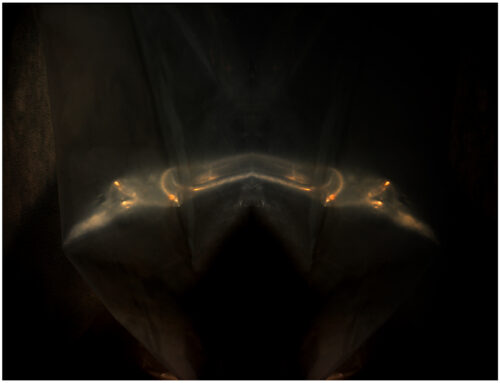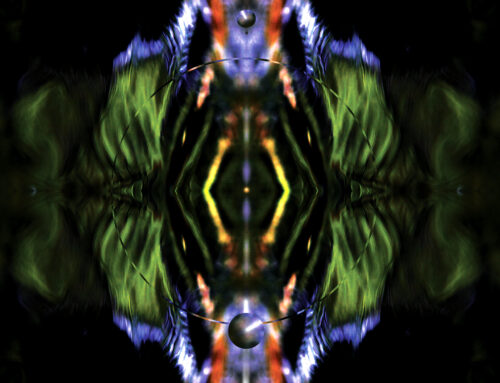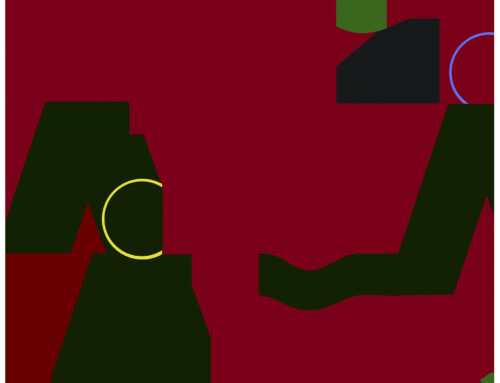LENNIE KESL, In Remembrance
When I went to bed last night, the stars were spinning one way–when I rose this morning, they had slowed and turned, their music darkened, gravity stopped for the briefest moment; my dearest Friend, my Mentor, my ‘Master’ of ‘Creative Joy’, my brother of courage, my father of belief, and my child of wonder… has slipped away from this plane of existence; Lennie has returned to the unalterable ocean of Light and Dark, leaving us to ponder, as we always do, as we must, what lies there in the richness of the immutable.
Lennie has died. His death was swift and accidental. He died at the age of eighty-six from a sudden fall with art in each hand and joy in his heart.
I had so hoped to be able to get back to the United States this Spring to visit him, to spend time with him, to be re-nourished, re-kindled, to have my mind’s data bank wiped clean by his exquisite energy, to grab his coat-tail as he soared out to his little boat on the blue sea, into the bright sun, with his iconic women, cats and birds, his elephants and irrepressible self, holding tight the kite’s tail of delight, the ‘Golden Section of Certainty.’
painting by Lennie kesl
As I write this, outside my bungalow in Northern Thailand, so far away from where he fell, the river cries crossing the dam…but from exultation rather than lamentation, for surely our tears are not for the loss of him but, rather, of gratitude for the gift of him and the generosity of art.
Whenever I’ve struggled to find a clear vision, often having lost sight of ‘purpose’, The Lennie part of me will surface. I have always counted on it. I do so now. We spoke a month ago and his parting words to me were to hold tight to my art, to my painting. And so I shall.
Several weeks ago I had revised an earlier poem…a poem of questions. The protagonist to whom I inquire is not Lennie, yet it is. I dedicate this poem and whatever is left of me to Lennie, who remains my ‘Onward and Upward’ beacon of brightness.
RED TABLE WITH PURPLE FLOWERS for Lennie kesl
There is, of course, the hue, I said,
and of the hue, should it be warm? Red, yellow,
burnt sienna?
It is blood, he cautioned, sun
and earth. But you also need what is cool—green
to blue to black, like
strata of the sea.
We were standing on the edge of a spent
field of grain that fell to the sun
and a raking mistral.
I brought only questions.
He turned to his work with a stoney silence,
chewing the stem of a cold, blue pipe,
facing the wind, the fierce
slapping of canvas, waiting for imagination’s raw nerve
to let go a vision.
There is intensity I said, and
purity, but how deep the shade,
how bright, how much white? Should I
consider the opacity
and the amount of light let through?
Should it recede or dominate?
Remember, he said, within the color
there is the passage. You might
expect it to end all at once. It doesn’t.
It often wants to modulate
from cold to hot, hot to cold.
Yes, but will the hue be held by line?
And of the line, will it be long or short,
thick or thin? I’m wondering how it
should be broken. Or should it?
Should it be continuous, holding
everything in? Should it be dark
or light? What value of line?
And should it shift? What weight?
Check for sincerity, he barked.
It could lie.
There are timid lines as well,
with low, slow curves that drift
unattached. Consider this: every line
has a beginning and an end.
Where and how far should you take it?
It might need only to be implied.
He turned away from, into the wind.
What about surface? I said.
The texture?
Should it be real or trompe l’oeil?
Is there a pattern? Should the surface
dance with a scumble
or a stipple? How clear
should it be?
How muddy? And what of the sheen?
Should it slide across like light in a dream?
He bent to the earth and drug up
a handful of dirt. I suppose
matte or flat would do, he said, scrubbing out
an unwanted passage.
I continued. What about
Chiaroscuro?
Sfumato?
How deep?
Should it be palimpsetically rendered?
Look, he said, you must consider this:
Beneath the surface lies
another surface. How many
must you uncover to find what you need?
I have yet to go that far, I said.
But what about shape? We mustn’t
forget shape. What size?
One large with many small?
Amorphous? Perhaps it would be nice to have
them all rather angular and richly defined.
They need to get to know each other.
Will they fight or make love?
I could tell by the movement of his ears
he was smiling.
He turned to me, away
from the breaching wind.
They often die on the borders,
he said. That’s where you’ll find
the mood.
The pleasure.
The affliction.
Would you have it cosmic and reverential —
a mysteriously immutable essence, moving
to and from the center? Might it be
something absurdly abstracted?
Or some political, social implication?
Should it be scratched, smeared
in blood — profane deprecation, a blind
gesture of nasty color? Death?
What about a simple landscape, I replied,
or vase filled with peonies?
There is always the portrait.
Always that.
I well remember Gachet’s portrait.
You painted the head with a white hat, the face
fair and light, the flesh tinted hands against
a blue frock coat, a cobalt
blue background, Gachet leaning
on a red table on which a yellow book,
sank beneath purple flowers.
A crescendo of wind-scattered clouds
and a rabble of feeding crows
sped across the burning fields, a flash
of black against the gold, against
the blue and white sky.
Someday, he said, someone will look at this
and find themselves amazed
to know they were here,
in this stand of ragged wheat
with all of these hungry birds.
This painting has always known its every hue,
its every nuance. It will live
or it will die. Don’t look for the mind
in all of this. It’s not you.
Or the two of us.
It is everything.
Or it is nothing.
Lennie with our friend Alvin Neely
Panom, Galen








